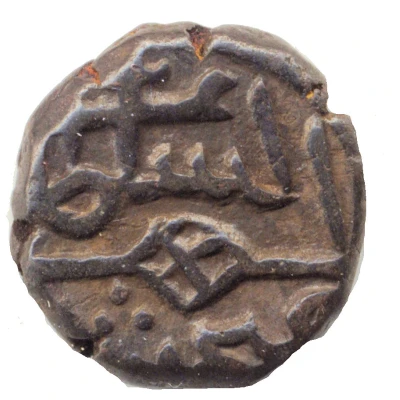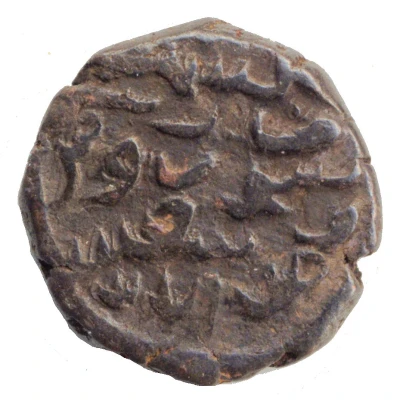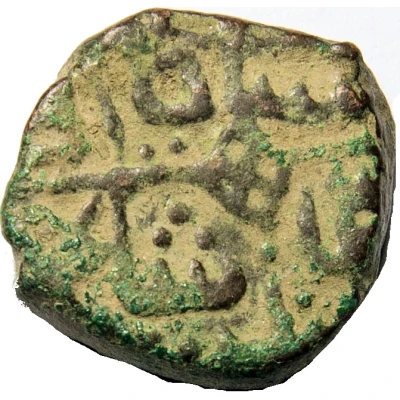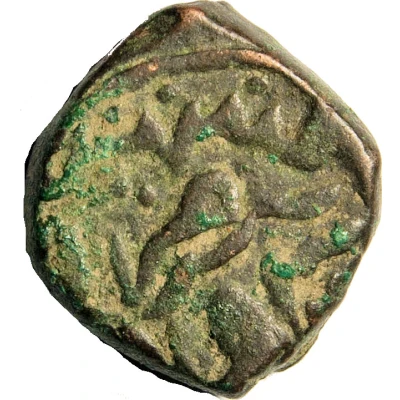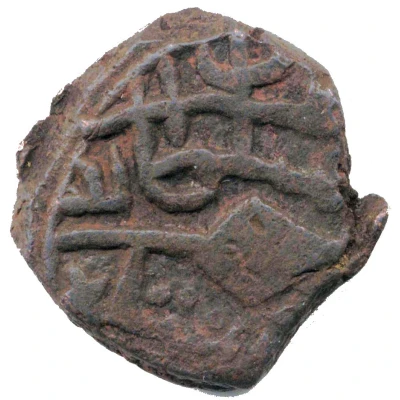
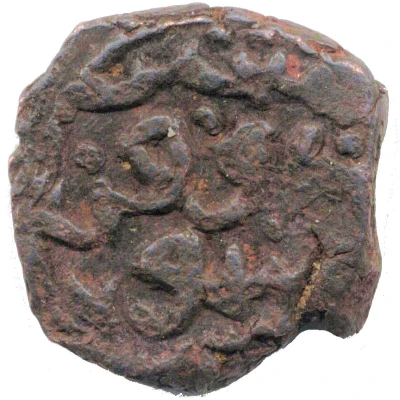

Kaserah - Fath Shah ND
| Copper | 5.55 g | 18 mm |
| Issuer | Kashmir Sultanate (Indian Sultanates) |
|---|---|
| Type | Standard circulation coin |
| Years | 1487-1517 |
| Value | 1 Kaserah |
| Currency | Rupee (1346-1526) |
| Composition | Copper |
| Weight | 5.55 g |
| Diameter | 18 mm |
| Thickness | 3.5 mm |
| Shape | Round (irregular) |
| Demonetized | Yes |
| Updated | 2024-10-05 |
| Numista | N#45306 |
|---|---|
| Rarity index | 74% |
Edge
Rough
Comment
THE SULTANS OF KASHMIR (AH 747 – 994 AD 1346 – 1586)The following brief history and chronology is based on the latest numismatic research by Nicholas Rhodes and published in Numismatic Digest, Vol.17 1997, IIRNS, Nashik.
Islam was introduced into Kashmir early in the fourteenth century AD by Shah Mirza, an adventurer from Swat. He became a minister to the ruling Hindu ruler and eventually succeeded in usurping the throne around AH747 (AD 1346/7), adopting the titles Shams al-din shah. His reign lasted three years and he was followed in turn by each of his four sons’ amshid, ‘Ali Sher, Shirashamak (Shihab al-Din) and Hindal (Qutb al-Din). In AH 970 (AD 1562-1563), Muhammad Ghazi was too infirm to continue ruling. He was removed by his brother Husain Chak, who ascended the throne with the name of Husain Shah. He was not, however, to remain master of his own destiny in view of the growing Mughal power. There was also significant religious dissension within the state.Akbar sent an envoy to Kashmir in AD 1568, who was well received. When the envoy returned to Lahore, Husain sent his own daughter, with fine gifts, to be married to Akbar. Various coins struck in the name of Akbar attest to these events. Husain shah abdicated in favour of his brother, ‘Ali Chak, who ascended the throne with the title Zahir al-Din Muhammad ‘Ali Shah in Ad 1570 (AH 978). At first he attempted to assert his independence but it was not long before Akbar sent two powerful ambassadors to Kashmir to require him to acknowledge Mughal Over lordship. Coins are known struck in Akbar’s name during this reign, though not from the time of the ambassadors’ arrival.Muhammad ‘Ali died suddenly from an accident in AD 1579 (AH 987) and this led to a period of confusion. He was succeeded initially by his son Muhammad Yusuf Shah, but this latter was soon ousted as a result of a rebellion by the Sayyid faction that saw Mubarak Khan ascend the throne as Mubarak Shah. He, in turn, was displaced by the counter rebellion, that saw not Yusuf but his cousin Lohar Chak seizes the throne. At this, Yusuf left Kashmir and sought Akbar’s aid to Regan his throne. A promise of aid was given but, in the event, was not needed as Yusuf managed to defeat and capture Lahore in battle. He resigns lasted for some six years but he was always mindful of pressure from the Mughal. In AD 1584 he sent his eldest son Ya ‘qub to akbar with fine gifts as proof of his loyalty, but the mission was not well received as Akbar expected Yusuf to come in person. Oddly enough, coins are known in the name of Ya’qub from that year, two years before he formally claimed the throne. In AD 1586 (AH 994), Yusuf was forced to submit to Akbar. He was imprisoned for his pains and then exiled to Bihar where he died in 1592. Resistance in Kashmir against the Mughal continued. Ya ‘qub was declared king and continued to fight a rearguard action for two years before realizing that further resistance was futile. Later that year (1586) or soon after, he submitted to Akbar and, from then on, Kashmir became part of the Mughal Empire.
Interesting fact
One interesting fact about the Kaserah - Fath Shah ND (1487-1517) coin from the Kashmir Sultanate is that it features a unique blend of Islamic and Hindu architectural styles on its reverse side. The coin's design includes a depiction of a mosque with a dome and minarets, surrounded by intricate carvings and ornate details that are characteristic of Islamic architecture. However, the arches and entrance of the mosque are designed in a distinctly Hindu style, with ornate carvings and sculptures that are reminiscent of Hindu temples. This blending of styles reflects the cultural and religious diversity of the Kashmir Sultanate during the 15th century, and highlights the syncretic nature of art and architecture in the region during that time.
Price
| Date | Mintage | VG | F | VF | XF | AU | UNC |
|---|---|---|---|---|---|---|---|
| ND (1487-1517) | - | - | - | - | - | - |
Values in the table are based on evaluations by sales realized on Internet platforms. They serve as an indication only for Kaserah - Fath Shah ND (1487-1517) coin.
